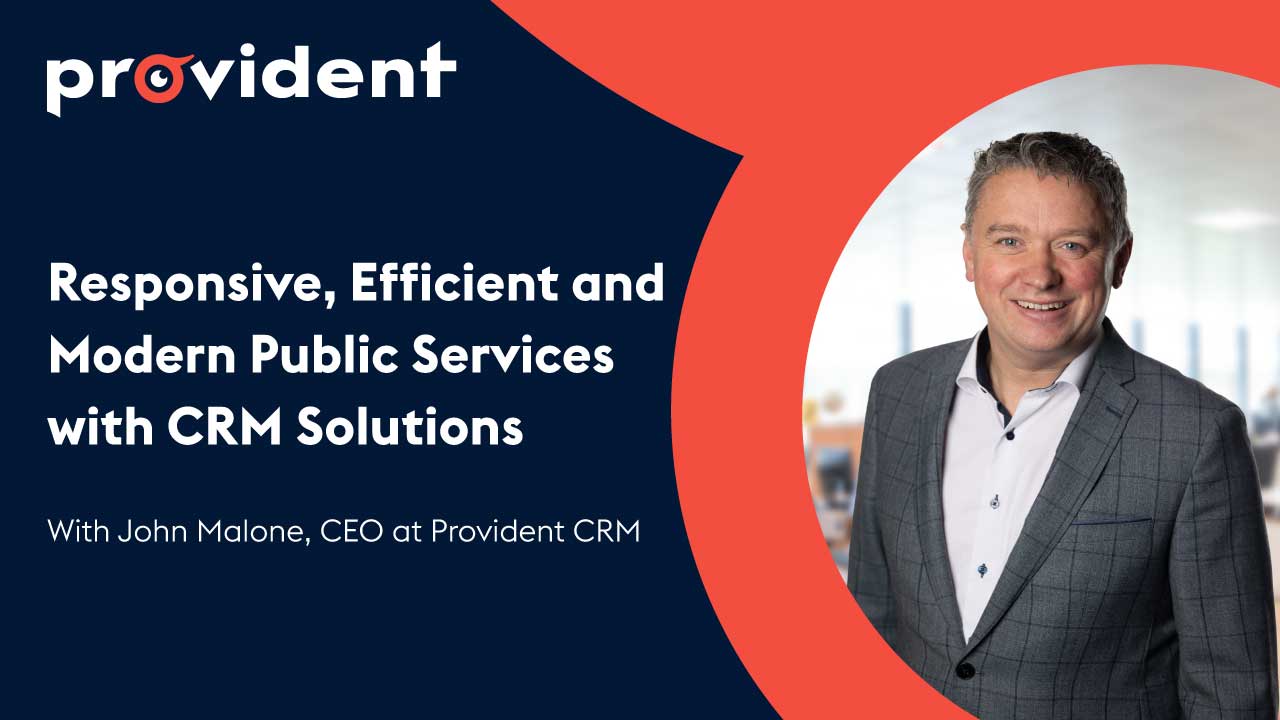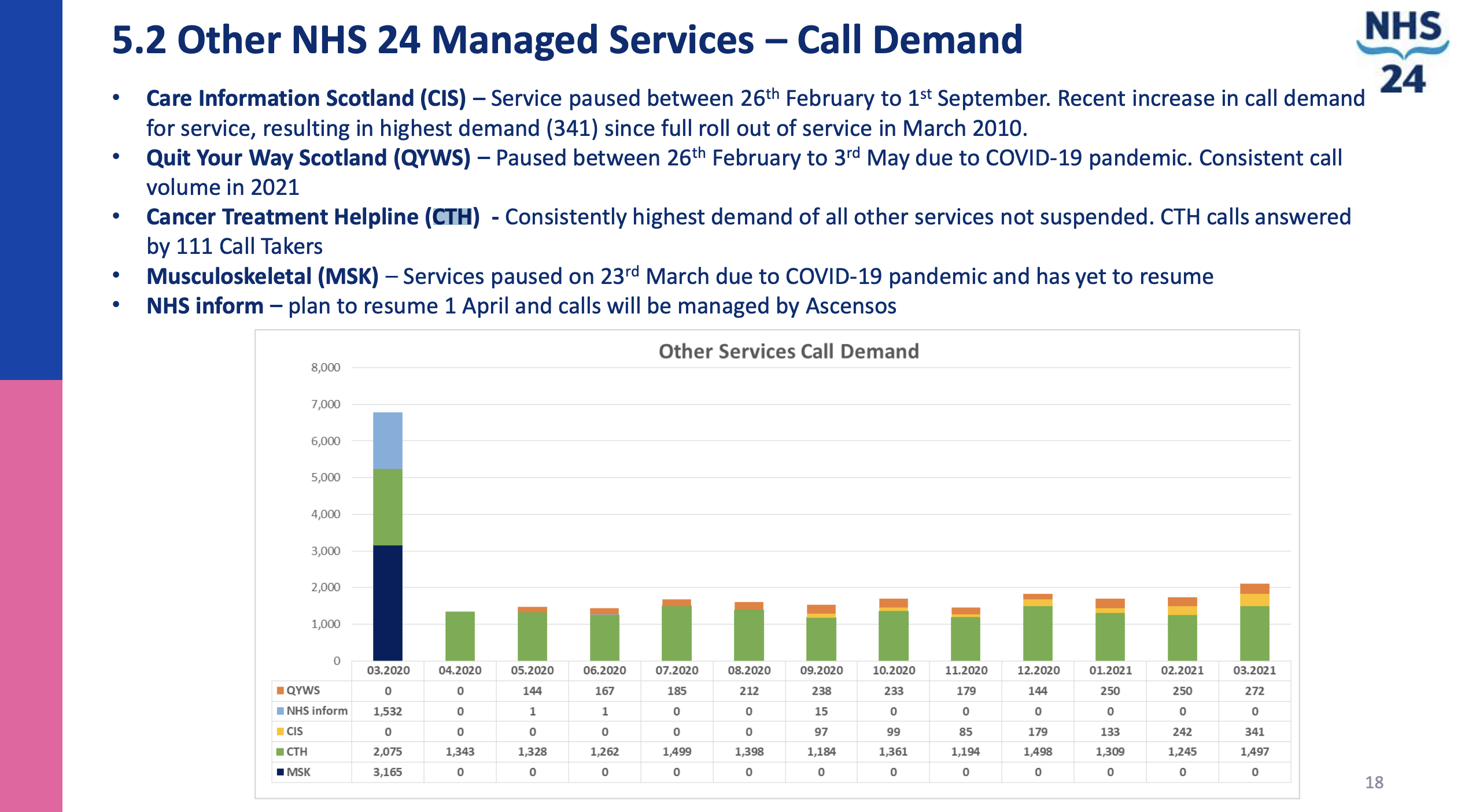
Provident CRM is a leading provider in digital transformation for the public sector, with extensive experience in supporting public institutions to implement and fully adopt Customer Relationship Management (CRM) systems.
John Malone, CEO of Provident CRM, shares his insights on how well-designed CRM systems help to solve core challenges facing the public sector, complete with on-the-ground implementation examples across public planning, healthcare and finance.
Years ago, at the start of our company’s journey, we decided to focus on transforming citizens into customers from a public sector perspective. For over a decade, we’ve been delivering on this aim in implementing digital transformation solutions for the public sector with leading CRM providers SugarCRM, HubSpot and Salesforce, as well as business process management platform monday.com.
We’ve seen that leveraging these quality systems enables the public sector to engage citizens with enhanced services. How? By offering individual-centric, rather than ticket-centric, solutions. Previously, a citizen’s issue or query would be logged with an issue number and listed as simply closed or open, with no concept or background of the individual citizen involved. With a CRM system in place, however, public sector organisations can link these logged items to citizens themselves, associating them with pre-captured data on demographic, personal information, past queries, and so on. In addition, a CRM solution facilitates overcoming data silo barriers, centralising data sets across authorities, departments, providers and sectors for crucial clarity, cost-efficiency and transparency.
1. Managing conflicting data streams
Particularly for local authorities, it’s common to have a single cross-sector service centre that communicates with multiple authorities and organisational tiers. Competing data streams from non-integrated systems can rapidly lead to high-risk confusion — which a well-designed CRM system can avoid.
In action: Creating a National Online Planning Portal for local authorities in Ireland
With 39 local authorities utilising separate planning and document management systems, roll-up reporting and data reconciliation issues arose. We led a thorough stakeholder engagement process with these local authorities to design a streamlined solution: The National Online Planning Portal and planning application system.
Via integrations, we enabled each local authority to connect the data from their existing planning and document management systems to a central CRM solution. This centralisation enables planning applicants to submit via the Portal no matter which local authority they’re in, alongside facilitating national reporting on submissions, documentation, types, etc. of planning applications.
2. Ensuring user adoption and effective change management
Bottom-up buy-in, combined with vocal support from senior stakeholders, is the best way to ensure enthusiastic user uptake for a new or enhanced CRM system; likewise, to ensure that the system meets both current and future stakeholder requirements.
In action: Stakeholder engagement for the National Online Planning Portal, Ireland
To inform the design of the Portal, we held cross-sector stakeholder engagement workshops encompassing local authority IT teams, planning application administrators, Department of Local Government and county representatives, and civil servants responsible for planning legislation.
These stakeholders voiced their needs from a reporting and efficiencies perspective, tabling the major change in work practices that the new, streamlined Portal would entail. By engaging all stakeholders from the start of the process, we made sure their input and ideas were reflected in the final design of the Portal, putting the user first.
3. Time-saving clarity and automations
Designed right, a CRM system provides you with a single source of truth for clean, accurate and reconciled data. Pulling data from multiple systems, a CRM can show public sector bodies updated snapshots of their service recipients (citizens, customers, patients, and so on), ensuring current and accurate information is readily available. This also enhances efficiency for the citizen, eliminating the frustration of having to repeat personal information, credentials and service entitlements with every interaction. In the same vein, tailored CRM automations also support optimising time and cost savings.
In action: Efficiency and cost savings with automated NHS appointment reminders
Missed appointments involve vast opportunity costs, which a simple WhatsApp or SMS reminder can alleviate. With the Patient Reminder Service (PRS), if patients can no longer make their appointment slots, others can be contacted to take their place.
These PRS automated messages also reduce NHS contact centre workloads, enabling callers to focus on confirming appointment holders’ ability to attend times for higher-cost procedures, such as MRIs and ultrasounds. Overall, the PRS implementation supports reducing not only monetary and personnel costs, but also clinical costs, ensuring patients in need of diagnosis can be seen as rapidly as possible.
4. Optimised data security and governance
Data security, control and access monitoring are vital for public sector bodies; requirements that must remain watertight, while simultaneously working to evolve past data silos and enable greater transparency and efficiency.
In action: Security-enhancing cloud migration for NHS 24, Scotland
We recently supported NHS Scotland to migrate disparate BT Data Centre systems to the AWS cloud, centralising its non-emergency scheduled care services. This new cloud solution is connected back to the Scottish Wide Area Network (SWAN), along with relevant NHS Scotland hospital systems.
This marked a significant transition in NHS Scotland’s data strategy for its scheduled care services, capitalising on the AWS cloud’s enhanced data governance capabilities and resilience to ransomware attacks. Transitioning to cloud-delivered solutions can also provide greater clarity on total cost of ownership (TCO) for services and applications that public sector bodies utilise, in comparison with enterprise applications.
The success of the programme can be measured by how Scotland’s AHP MSK services deal with high volume demand – which is currently 400,000+ referrals annually. For example, it is estimated that between 10% to 40% of new orthopaedic referrals do not require a surgical opinion and of patients on a waiting list, between 5% and 15% do not want or need surgery. Our system works to ensure that General Practitioners (GPs), orthopaedic services and AHP services can work in unison to ensure that referrals are appropriately reviewed to ascertain which patients require acute hospital referral and those patients who could benefit from rapid access to more locally based community services.
This is important because an estimated 20-30% of all GP consultations have an MSK component, so as many as 10 million work days are lost annually from people with MSK conditions not being treated fast enough.

Read the full summary of the NHS 24 Scotland project here.
Our systems are designed to better manage rising demands for elective health care services, which felt the pressure during the peak of the COVID-19 pandemic and long afterwards. They include digital solutions that give patients the ability to communicate with various online services instead of via telephone, the use of social media to spread important information, and voicebots that interact with a patient/caller as if they were speaking to a human – all of which help to reduce pressure and improve service delivery.
5. Adaptability and crisis-readiness
Designing and implementing a CRM system should involve building in the flexibility that the platform requires to evolve with your organisation’s needs, both responsively and proactively.
In action: Building the Irish Department of Expenditure and Reform’s COVID tracker in days, not months
The Provident CRM team had previously designed a bespoke system enabling Ireland’s Department of Expenditure and Reform to track diverse funding usage, from resources for local sports facilities to motorway construction, and digitally report on this in line with European requirements.
Spanning multiple funds and stakeholders, the system had high-volume data capture capabilities — which, when COVID came, were able to pivot rapidly. A new COVID fund needed to be integrated into the system, enabling tracking resources allocated to PPE purchases, testing centres, and so on. The way in which our team had initially designed the Department of Expenditure and Reform’s CRM system meant that we could implement this new fund in a matter of days, delivering agility that wouldn’t have been possible with a hard-coded alternative.
6. Accountability and traceability
Leading CRM platforms offer workflow engines, allowing public sector bodies to program in the tailored approval processes that their organisation requires. In parallel, flexible reporting tools are built into top CRM solutions as standard, often with optional extensions that enable connecting up Business Intelligence tools to facilitate any broader-view reporting needed.
Our work with Meath County Council included building a system that handles the traceability and tracking of executive orders, with various bespoke workflow systems designed to simplify case management.
Our focus was on the total digital transformation of their systems, where built-in SLA’s allow staff members to prioritise their work based on time frames and legislation – so there’s now a single point of service and no instance in which a case can fall through the cracks.
7. Integrating legacy systems
Data retention requirements are, naturally, a key focus for public sector bodies that are considering implementing a new CRM system or updating a legacy system. In addition, the ability to integrate other legacy systems (finance, HR, etc.) with a new CRM solution is crucial for saving time and expense in CRM implementation.
In action: Designing the Building Control Management System, Ireland
For local authority planning applications, certain data sets must be retained forever. Previously paper-based, we guided the National Building Control Office’s digital transformation of these records to create a Building Control Management System (BCMS) digital register.
Online, searchable and indexed, the BCMS enables rapid, wide-ranging term-based searches of planning application data. For citizen end users, this saves time travelling to public research counters, as the database is searchable remotely. We also enabled publishing the BCMS data to the data.gov.ie open portal, facilitating big-picture reporting for mapping purposes, government-level research and insights, and more.
A CRM solution facilitates overcoming data silo barriers, centralising data sets across authorities, departments, providers and sectors for clarity, cost-efficient and transparency.
– John Malone, CEO of Provident CRM
Considering implementing a new CRM system or updating a current legacy system? It’s worthwhile surveying the provider landscape to identify the optimal solution for your public sector organisation’s profile and requirements.
An enterprise solution from your existing IT provider may be just what you need. But there may also be suppliers better suited to deliver on your use cases in the post-pandemic environment, ready to contribute insightful and experienced CRM strategy to extract maximum utility and performance from the funding you have available.
For further guidance, don’t hesitate to get in touch with our team via the form below.